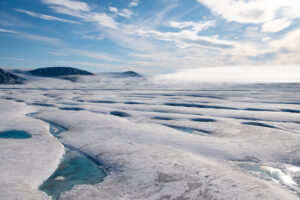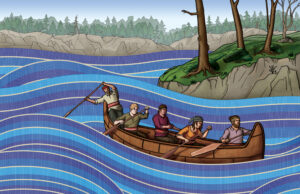Most people who carry an auger and an axe out onto the ice that covers Georgian Bay from January through March have one ambition: to catch a fish.
But Geoff Coombs is not like most people.
When he crunches across the bay’s frozen surface near Tobermory, Ont., he’s toting not just auger and axe, but a mask, a snorkel, a pair of 74-centimetre-long carbon fins and a single-minded desire: to dive under the ice.
“It’s very peaceful, very surreal,” says Coombs, 26, a professional photographer and freediver — someone who dives without the aid of a breathing apparatus — who has been exploring and photographing the bay’s waters since 2015. “You can usually see 30 to 50 metres, with the ice above you going on for what seems like forever. It’s kind of what I imagine outer space would be like.”
Coombs first tried freediving during a spearfishing session while on holiday in the Bahamas in 2015. Later that year, he joined Freedive Toronto, a club that organizes summer weekend trips to Tobermory, near Fathom Five National Marine Park and one of the most popular places to dive in Canada. The progression from freediving in Tobermory’s balmy water to plunging into its 1 C depths for the first time in January 2016 was driven partly by Coombs and his friend and fellow freediver Andrew Ryzebol’s sense of adventure and partly by their curiosity. “We thought the images would be really unique,” says Coombs. “So we just went for it.”
Coombs makes freediving under the ice sound simple, but it’s a deadly serious business. “In the summer, you’re typically a lot warmer and more relaxed,” he says, noting that in warmer weather he’s gone as deep as 40 metres while Ryzebol has reached 60 metres. “But in winter, we don’t push it deeper than 20 metres because it’s so cold. After an hour or two in that water, you can be shivering a little and it’s harder to hold your breath longer, harder to relax.”
Even with the chill, Coombs says, the experience of being underwater sans gauges, tanks and hoses for anywhere between 30 and 90 seconds is one he finds calming. “Most people would see it as extreme,” he says, “but I just focus on the moment, getting into position and capturing the shot.”
See what it’s like to freedive beneath the ice of Georgian Bay:





